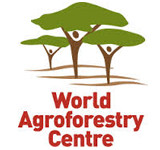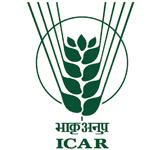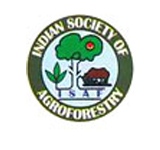
Vigyan Bhavan & Kempinski Ambience
10 - 14 February 2014
Delhi, India
blog

Poplar based agroforestry (PBAF), in North India, is widely quoted as a successful land use intervention for sustaining farming and generating benefits to the farming community. Spearheading the forestry program in the company which has been and is still the backbone of poplar program, I feel it is an appropriate platform to put up some of its salient features in this blog for the benefit of agroforesters, scientists and other followers.
Indo-gangetic plains of North India are the food bowl of the country. This region is one of the highly productive belt for food grain production and was the torch bearer of green revolution. This revolution undoubtedly secured food for millions of Indians and we have been the food surplus Nation for decades now.
High input intensive agriculture during green revolution deteriorated soil health and stagnated crop productivity. Farm income from agriculture crops has been marginalized with successive increasing production costs. Search for alternative land use led to economically viable integrated PBAF which is often referred as commercial and industrial agroforestry. It is generating remunerative returns (sometimes up to Rs. one lakh/acre/year net returns) to the growers and many innovative partnerships are developing for its extensive culture among landless, land owners, poor and rich peoples. The success is based on introduced Eastern Cottonwood species (Populus deltoides) in new geographical locations where non of the indigenous or introduced poplars have ever existed before this endeavor.
Some states are now recommending and promoting PBAF for diversification from intensive land degrading paddy culture to multifunctional, sustainable and tree-crop integrated stable farm land use production system. It is now meeting the twin objectives of food and wood security in addition to other forestry, environmental, industrial, economical, financial, and rural development applications. Timber production from PBAF is now providing wood security for around 2000 poplar based industrial units manufacturing three dozen products in addition to firewood security for rural inhabitants.
PBAF, through its integrated components of agriculture and tree crops, is maintaining greenery on farm land throughout the year and is a reflection of true evergreen revolution. Poplar has better integration with intercrops on farm land and over dozen agriculture crops are grown in PBAF throughout the retention of trees on farm land. There is some loss in crop production under PBAF which increases with age of trees but is compensated with better returns from sale of trees as cash crops.
The retaining of trees on farm land for providing goods and services has been an age old practice in India. Evolution of PBAF is a recent intervention and it took almost three decades to firmly establish its roots.
The practice of PBAF was initiated during 1970’s when the match company-WIMCO Ltd. started its promotion for securing matchwood production for its factory in Uttar Pradesh, India, with its own resources till 1984 and under contract farming model between 1984 to 1995. Thereafter, poplar saplings and some other technical inputs are also being provided by some others including private nursery growers, state forest departments, research institutes and state agricultural universities but the volume is still controlled by WIMCO and Ex-WIMCOITE’s. WIMCO supplies poplar saplings to around 15000 farmers every year. The company now hardly uses 0.2% of total poplar timber produced for match splints and the rest is used by others.
The industry has adopted this approach and synergy with farmers as it is not permitted to hold land for raising industrial plantations under the existing land laws. Government forests are now largely maintained for environmental services. The major timber supply to industry and domestic needs comes from farm grown trees like poplars.
Farmers prefer to purchase quality saplings from mainly private nurseries and sell their tree produce at market controlled prices. Farmers, many a times, sell their poplar trees through negotiations by sitting in their drawing rooms on standing tree inventory/weight basis compared to most agriculture produce being sold in grain markets. Initially, large and absentee farmers adopted it but now numerous small farmers planting a few dozen saplings are also engaged in PBAF. Some good corporate houses promote its plantations under their corporate social responsibility programs.
Poplar culture is presently spread over 0.312 million ha, 99% of which is grown in agroforestry by over 0.3 million small growers, 60% being inside fields and 40% on field boundaries. Twenty to thirty million poplar saplings are planted annually by around 60000 small growers. Each year, poplar produces 8 million tone fresh timber, 1.8 million tone pulpwood, 3 million tone firewood, and generate over 100 million person days employment largely in rural areas where job opportunities are very less.
Poplar nursery production, tree culture, wood usage, silviculture and tree improvement research is largely in private sector. Research on poplar protection, wood working technology and some other aspects is being carried out by national and state research institutions.
The carbon sequestration potential of poplar based agroforestry is much higher than most other land uses in practice. Some other environmental aspects of excessive water usage and isoprene production by poplars are also being debated by the scientific community.
PBAF is unique example that created win-win situation for all- the farmers, wood based industry, financial institutions, central and state governments. A new useful tree has been firmly established on farm land with a symbiotic relationship between industry and small growers. It is considered a potential mean for rural development by self sustaining productive and integrated land use system without much investment and engagement from government institutions. The success achieved with PBAF is a motivating factor for similar programs initiated in India and elsewhere. It is an ideal example for replication with other species in land deficit, over populated, low land holdings and wood deficit countries like India.
Number of blogs and likely abstracts on poplar based themes quoting experiences of some farmers included in WAC2014 indicate its transformational impact in rural economy.
Photo: Four years old poplar plantation with wheat as intercrop on farm field
Blogpost and photo by Ramesh C.Dhiman – WIMCO Ltd./Wimco Seedlings Division (Rudrapur, Uttarakhand, India) – dhimanramesh(at)yahoomail.com
|
This post is entry nr #11 in our #WCA2014 blog competition. The five blogposts with the most and highest votes will receive a signed copy of the book "Trees for Life". The most popular blogpost will get an iPad.
This blogpost received 36 votes, with an average score of 4.5 (out of a max of 5).
Follow our #WCA2014 social reporting teamfollow our social reporting team via the #WCA2014 tag on Twitter, our blog and our Facebook page.
|






31 People have left comments on this post
I have been following poplar culture in India for quite some time. This blogpost, with useful hyperlinks ,provides complete peciture as how it could convrt into mass movement with support from industry-a rare phenomenon. Congratulate Ramesh for bringing out this story. This is more of a sceintific blogpost.
This is a very well written piece for the information of readers who are not well versed with this concept/ practice and its success. Including few lines on the definition of the components of the practice, successful companion crops and its potential out scaling to other geographies shall be helpful.
Best regards.
The article is very informative about poplar growing in Northern India. It is a agroforestry crop. Poplars enhanced economy of rural farmers. Moreover, it has a role in carbon sequestration. Dr. Ramesh C. Dhiman has a great experience on different aspects of popla growingr. All his experience, he synergies in the article. This article has a great value for persons who are growing poplar or working on it.
Regards,
P. K. Pande
I visited WIMCO Ltd. during International Poplar Commission meeting (2012) and experienced first-hand Poplar Based Agroforestry in North India. Our interactions with farmers, stop-over at privately owned Century ply wood factory and the visit to different poplar plantation with agroforestry models (ginger & poplar, mango & poplar, sugarcane & polar) clearly demonstrated the determination of Haryana Forest Officers, WIMCO researchers and landowners in creating local employment. My kudos to all the people involved in creating an evergreen revolution……!!
Wimco has done extraordinary work in Agroforestry in North India and is responsible for wide adoption of poplar based agrofoestry by farmers.
Hats Off to Dr Ramesh Dhiman for his dedication and sincere work with farmers. Sir, your contribution will always be remembered. Sir, your hard work has brought smiles on face of millions of farmers in North India. Many CONGRATULATIONS for recieving prestgious award from INTERNATIONAL POPLAR COMMISSION-2012.
Best Regards
Nikki Pilania Chaudhary
This is one of a very few examples, translating research into direct socio-economical upliftment of farmers. Congrats Dr. Dhiman.
With warm Regards
Ram Veer Singh
The information about poplar culture in India given by Dr. Dhiman is very useful for the agroforester and also for the scientific community. Really Poplar culture has changed the entire economic status of the farming community. Wimco played an important role to popularize the poplar culture among farming community.
I appreciate Dr. Dhiman & his team for their excellent performance in this field.
J. N. GANDHI
Contributions of dedicated team of WIMCO Seedlings limited not only in producing quality planting stock are important but their role in making poplar based agroforestry more popular through their extension and research base are worth appreciating. Poplar has transformed the landscape and socioeconomic status of the farmers in north western states and species is extending to other areas in India as well. Dr Dhiman has shared diversified aspects of poplar based agroforestry and hopefully his team would keep serving the famers through their research and extension support.
Sanjeev K Chauhan
Such type of articles on poplar were written in last many years Nothing is new in this article. Dr. Dhiman has very long experience in poplar with WIMCO. If this article reflects on recent research on poplar particular advantage of new clones developed by WIMCO and other organizations and economics of new clones in block plantation as well as in agroforestry systems where crops are grown with poplar clones then it could give good and important information.
Sir, your article on poplar based agroforestry in nothern india is very productive. I think many people related to this field will get more information about the poplar. You have successfully established poplar in many disricts of Uttarakhand also and has given employement for many villagers and farmers. Sir as we know that you are very dedicated to your work so, we are expecting from you to introduce poplar in hills also.
Sir , this article gives a quick overview of poplar in agroforestry in Nothern India. Poplar has changed the economy of farmers after successful establishment of poplar in agroforestry. WIMCO has developed many productive clones in recent years, but there is more need to produce disease resistance clone, as we know that it is very prone to new diseases.
I appreciate the critical obsevations for additional information on economics and new clones rasied by Mr. V K Gupta . Keeping in view the space restrictions on this blogpost, such information could not be loaded here, However, some hyperlinks marked in this post could be checked for some latest publications. I will appreciate Mr. Gupta to forward his mail ID so that the same cound be mailed to him.
Regards
Dhiman
In response to the observations of Archana for introducing poplars in Hills, farmers in J&K and H.P. have already taken up poplar plantations in the Inner and middle Himalayas and a farely good scale plantations are grown in selecetd localities. I agree, there is more need to be done for expansion of poplar culture in Uttarakhand hills.
The article on poplar is informative and well covered. Wimco has done excellent work. The success of growing poplar in North India added huge amount to National income and Agroforestry subject study became poplar and government of India as a policy matter allocating much funds to the agroforestry subject study. Ramesh C Dhiman has taken good step to spread the information to all agroforesters across world.
In the article many lines related to introduction can be removed. These are known to the persons working in agroforestry in northern india and mention economics as well as important work done by WIMCO in recent years. Otherwise article seems to be of similar type as written by previous workers in same organization long back. vkgup@rediffmail.com
This blog contains useful information on PBAF. The PBAF is perhaps the most successful, discussed and cited example of the commercial agroforestry in India, where even, the concept of contract farming was tried. Some success was also achieved in case of Eucalyptus and Casurina based agroforestry in South India. The agroforestry planners, researchers and private players (corporates) should work for replicating such models for different agroclimates of India for their promising MPTs and potential use.
This is a real story at the zero ground in comparison to many other fictional blogposts especially from India
Excellent!!
this blog has been useful in providing information about poplar.
good work
i am from punjab. i have been growing poplar for about 10 years and have found poplar clones as best
The role of wimco in promoting poplar and eucalypts culture in North India is undisputedly the best
I have seen Dr Dhiman talking Poplar since I was a student. His hard work and obsession with Poplars is eminent.
we have been growing poplar in pathankot for last sixteen years .such kind of enthusiastic articles are very helpful to farmers in growing poplar plants.Government should award work of organisations like wimco for their excellent contribution in poplar culture. i appreciate Dr ramesh chander dhiman for bringing such blogpost.
rakesh kumar
civil engineer
PBAF also help increasing green cover and doing its bit in air quality improvement. A very positive thing for Indian forestry.
It is not easy to collect this much of deep data on any subject and It is extremely good work on poplar by Dr. RC Dhiman and i congratulate him for his outstanding performance…..
That’s very well piece of information for those who are not well aware of these concepts. And I know it would have been very difficult to work upon these kind of works. But that is really informative and I really appreciate that..
Excellent work. The concept of PBAF
Could really have a transformational impact on India’s growing economy.
Its really a work of veneration.Its an eclectic mix of information which we dont get easily . I really appreciate this work and i hope these concepts would take India to higher levels.All the Best.
Regards
Bhanu Pratap Sharma(Electronics and Communication Engineer)
Poplar based agroforestry has transformed the economy of farmers as well as industry in north India. It has shown that wood production can be amicably combined with agriculture for environmental as well as economic wellbeing of the country. The contribution of WIMCO in making it happen is known world over. Dr Dhiman has given strong leadership to WIMCO in this effort. The blog is aptly titled and well supported with relevant data. My best wishes to Dr Dhiman in his efforts.
excellent job……